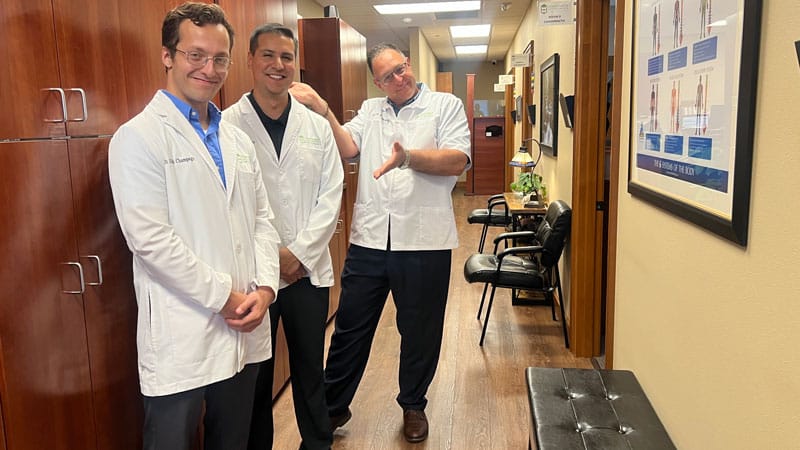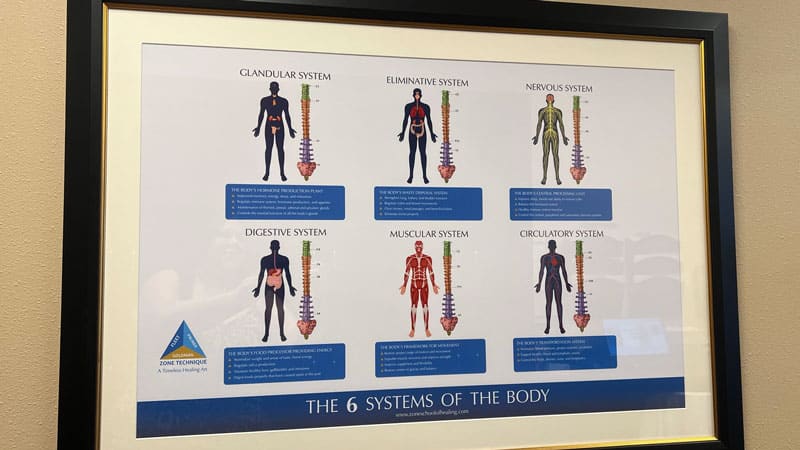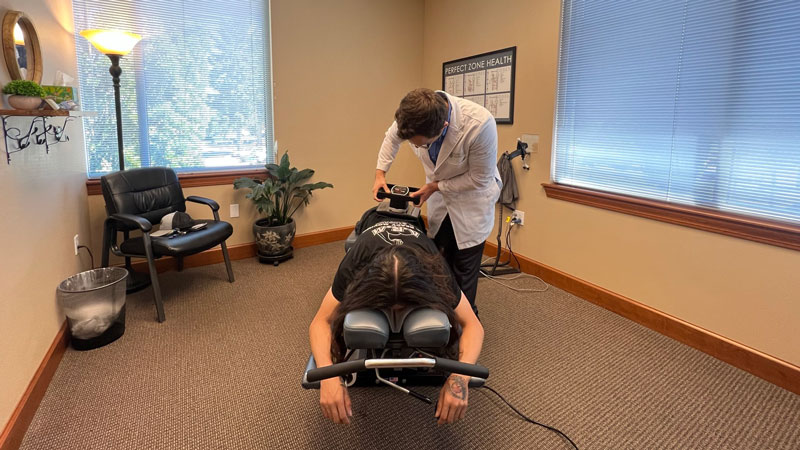Why Are Chiropractors Different?
Chiropractors are different because each one brings their own mix of training, experience, and personal style to care. They tailor treatments to your unique needs, making every approach a little different—like a craft, not a copy.
There’s a unique blend of science, art, and personal expression that sets chiropractors apart from other healthcare providers. I believe each chiropractor develops their own techniques based on experience, personality, and patient needs, making every practice distinctive. When you choose a chiropractor, it’s important to find someone you trust and connect with, as this relationship significantly impacts your healing journey. I aim to tailor my approach to fit your individual preferences and health goals, ensuring you receive care that truly suits you.
Key Takeaways:
- Chiropractors bring individual techniques and styles influenced by their personal experiences and interests, making each practitioner’s approach unique.
- Chiropractic care blends art, philosophy, and science, allowing practitioners to express their skills creatively while adapting to each patient’s needs.
- Building a trusting relationship between patient and chiropractor is vital, with openness to communication and adaptability playing a significant role in effective care.
The Artisan Approach to Chiropractic Care
I often liken chiropractic care to an artisan’s craft—each adjustment and technique is carefully shaped by the chiropractor’s unique skills and intuition. This approach blends technical knowledge with personal expression, allowing me to tailor treatments that resonate with your individual needs. Just like a musician interpreting a piece differently, I bring my own style and methods to every session, ensuring that your care is not a one-size-fits-all routine but a distinctive experience designed specifically for you.
Personalization in Treatment Methods
Every patient presents a different story, body structure, and comfort level, so I don’t rely on a single method. Instead, I combine various techniques drawn from my training and experience to find what works best for your condition. If you prefer to avoid certain adjustments, we explore alternatives that align with your preferences and goals. This flexibility creates a partnership where your input shapes the treatment plan, helping you feel both supported and involved in your healing process.
The Role of Individual Philosophy
My personal philosophy guides how I approach chiropractic care, emphasizing empathy, collaboration, and continual learning. How I interpret spinal health and body mechanics influences which techniques I prioritize and how I engage with you as a patient. This philosophical lens shapes not only the physical adjustments but also the overall environment and communication style within my practice.
Diving deeper, philosophy in chiropractic isn’t just abstract thinking—it directly impacts outcomes. For example, I believe in empowering patients to take an active role in their care, which means educating you about your body’s mechanics and encouraging self-care strategies alongside manual therapy. This mindset fosters trust and openness, allowing me to adapt techniques fluidly as I observe your response over time. Each chiropractor’s philosophy is subtly reflected in their treatment nuances—how forceful or gentle adjustments are, what supplementary therapies are included, and even how we manage pain versus mobility—making your experience uniquely suited to both your needs and my professional convictions.

Beyond the Science: The Art of Healing
Chiropractic care extends beyond measurable science into a deeply personal and expressive art form. Each adjustment reflects not only clinical knowledge but also the practitioner’s intuition, creativity, and connection with the patient. I’ve found that blending science with this artistic approach allows for more nuanced care, tailoring each session to resonate with the individual’s unique needs and responses, making healing a more dynamic and inspired journey.
Techniques as Expressions of Practitioner Identity
Every chiropractor develops a distinct style shaped by personal experience and preference. The techniques you receive often mirror my own journey—what I’ve found effective, what resonates with my philosophy, and what feels authentic to my hands. Much like an artist’s brushstrokes or a musician’s rhythm, these methods become an extension of myself, expressing who I am as a healer while aiming to best serve your health.
Blending Techniques for Unique Outcomes
Integrating multiple chiropractic approaches creates tailored strategies that respond to your body’s specific challenges. Combining manual adjustments with soft tissue work or incorporating instrument-assisted techniques can unlock better results than relying on one method alone. This fusion reflects not only my skill set but also a commitment to adapt and innovate according to what your body needs in the moment.
In practice, blending techniques means I might start with a gentle mobilization to ease tension before delivering a precise spinal adjustment. For example, using myofascial release alongside traditional manipulation often helps patients with chronic pain achieve greater mobility and comfort faster. Every case demands a personalized mix—taking into account your history, preferences, and responses—to achieve outcomes that feel both effective and sustainable.
Establishing Trust: The Patient-Practitioner Connection
Trust forms the foundation of any successful chiropractic care. When you walk into my office, building a genuine connection matters far beyond just performing adjustments. It’s about understanding your unique story, concerns, and goals, creating a two-way relationship where both of us engage openly. That trust allows me to tailor treatments effectively and helps you feel confident in the care process. It’s the subtle differences in communication and respect that often distinguishes one practice from another, and it’s what I strive to cultivate every time we meet.
The Impact of Relationship on Healing
A strong patient-practitioner relationship can significantly influence healing outcomes. When you trust your chiropractor, your body relaxes more easily, which improves adjustment effectiveness and overall responsiveness. Studies show that patients with deeper connections to their providers report higher satisfaction and better pain management. I’ve seen this firsthand when patients who initially hesitated to try certain techniques eventually find relief simply because they felt safe and understood, reinforcing how important relationship is in the healing journey.
Adapting to Patient Concerns and Preferences
Taking your preferences seriously shapes how I approach care. If you express discomfort with a particular technique, I prioritize alternatives that still promote healing without causing stress or fear. For instance, some patients prefer gentler mobilizations over high-velocity adjustments; others may need modifications due to previous injuries. Listening closely allows me to customize the methods, ensuring the treatment feels respectful and effective, not just standardized.
In practice, adapting to your concerns means more than offering options—it involves actively collaborating on your treatment plan. A patient once told me they feared neck manipulations due to a past experience, so I integrated instrument-assisted adjustments combined with soft tissue work instead. Over several sessions, this approach not only eased their apprehension but improved their mobility and reduced pain. Adjustments don’t have to be one-size-fits-all; each method I choose is influenced by your feedback and comfort level, creating a truly personalized healing environment.
The Diversity of Chiropractors: A Spectrum of Styles
Chiropractic care varies widely because each chiropractor brings a unique blend of training, personality, and technique preferences to their practice. Some may focus on hands-on manual adjustments, while others incorporate instrument-assisted methods or complementary therapies. This diversity allows practitioners to tailor their approach to individual patient needs, making each chiropractic experience distinct. I’ve found that embracing this variety not only enriches the profession but also expands the ways we can help people on their healing journeys.
Comparing Techniques Across Practices
| Technique | Characteristics and Application |
|---|---|
| Manual Adjustments | Involves skilled, hands-on manipulations focusing on spinal alignment, often providing immediate relief and increased mobility. |
| Instrument-Assisted | Uses tools like the Activator, delivering controlled impulses, suitable for those preferring gentler approaches. |
| Soft Tissue Therapy | Incorporates massage or myofascial release to complement adjustments, addressing muscular tension and promoting overall balance. |
| Combination Techniques | Many chiropractors blend approaches, adapting treatments based on patient feedback and response. |
Patients’ Perspectives: Stories of Transition
Hearing how patients shift from one chiropractor to another highlights the uniqueness of each approach. Some arrive expecting exactly what they’ve experienced before, only to find different techniques or treatment philosophies. I’ve had patients tell me that while another chiropractor’s style felt too forceful or impersonal, our more tailored and communicative approach helped them feel engaged and cared for, making all the difference in their recovery.
Diving deeper into these transitions, many patients note the importance of finding a practitioner who listens and adapts rather than following a rigid protocol. For example, one patient with chronic neck pain described their frustration after visiting three different offices. When they found me, the combination of hands-on adjustments and alternative techniques, along with open dialogue about their comfort and preferences, transformed their experience. These stories emphasize how critical it is not just to find skilled hands, but a healer whose style matches what you need in that moment and phase of your health.
The Zone Technique – The Balance of the Body
The Zone Technique is a chiropractic method that focuses on balancing six key systems in the body: glandular, eliminative, nervous, digestive, muscular, and circulatory. Each of these zones is controlled by a specific part of the brain, and when one zone is out of balance, it can lead to a variety of symptoms or health issues. The Zone Technique works by identifying which zone is disrupted and then applying gentle spinal stimulation to specific areas of the spine that correspond to that zone, helping the brain reset communication with the body and restore proper function.
At Warwick Chiropractic, Dr. David Warwick uses the Zone Technique to help patients experience relief from pain, improve energy, and support overall well-being. What makes this method unique is its holistic focus—not just treating symptoms, but addressing the root cause of dysfunction by restoring balance to the entire system. Many patients report feeling clearer, more relaxed, and more in tune with their body after a session. It’s a simple, targeted, and effective way to support healing from the inside out.

The Future of Chiropractic: Trends and Innovations
The landscape of chiropractic care keeps evolving, blending time-honored hands-on techniques with new methods and technologies. I see the future shaped by a more personalized approach, where advanced diagnostics, data tracking, and patient-centered care come together. This evolution not only deepens our understanding of each individual’s unique needs but also expands how effectively we can tailor treatments. The balance of preserving chiropractic’s artistic nature while embracing innovation will continue to define how we support your health journey.
Integrating Modern Technology with Traditional Techniques
Digital analysis tools, such as motion capture and surface electromyography, are increasingly paired with traditional adjustments to enhance precision. I use these technologies to assess posture, muscle activity, and spinal alignment before and after treatment. This integration provides objective feedback, helping fine-tune techniques while preserving the personalized touch that chiropractic care demands. Tools like 3D imaging and computerized adjusting instruments extend, rather than replace, the skilled hands guiding your care.
Evolving Patient Needs and Expectations
Patients today are more informed and proactive about their health, seeking treatments that fit their busy lifestyles and holistic wellness goals. Many want to avoid medications or invasive procedures and prefer natural, non-invasive options tailored specifically to their symptoms and routines. I find that addressing mental well-being alongside physical adjustments often resonates deeply, reflecting a more integrated understanding of health.
Over recent years, a growing number of patients express interest in combining chiropractic care with nutritional advice, stress management, and therapeutic exercises. This shift requires chiropractors like me to broaden our skill sets and collaborate closely with other health professionals to meet those comprehensive needs. The demand for flexible scheduling, telehealth consultations, and transparent communication also shapes how I structure my practice to foster trust and long-term engagement.

Conclusion
Taking this into account, I believe chiropractors are different because each practitioner brings a unique blend of techniques, personality, and experience to their care. I encourage you to find a chiropractor with whom you build trust and feel comfortable, as the relationship itself plays a significant role in your healing process. Your experience will be shaped not only by the methods used but also by how your chiropractor understands and accommodates your individual needs. This personalized approach makes your journey to better health truly distinct.
At Warwick Chiropractic, our doctors each have their own unique style, each able to apply his art and science to the patient to help eliminate and manage pain. While different, each chiropractor does adhere to the standard set of protocols dubbed The Warwick Way to ensure every patient receives the same standard of care. Every patient responds differently to every chiropractor and at present, we have three in the office, so why not try each to see which sits best with you and your condition?
Remember we are walk in friendly, but appointments can also be scheduled. We accept many insurances, so why not find the relief to your pain and stop in and see us today?
FAQ
Q: Why do chiropractors use different techniques?
A: Chiropractors often develop their own preferred methods based on a mix of personal experience, training, and individual interests. This blend creates a unique style for each practitioner, much like an artist choosing their tools. The variety in techniques allows chiropractors to tailor treatments to the needs and preferences of each patient, making the care more personalized and effective.
Q: How does the relationship between patient and chiropractor affect treatment?
A: Building trust and connection between the patient and chiropractor is fundamental to effective care. When both parties communicate openly and are comfortable working together, it creates a supportive environment. This relationship allows the chiropractor to better understand the patient’s condition and preferences, leading to customized treatment plans and greater patient satisfaction.
Q: What makes one chiropractor different from another? Aren’t they all the same?
A: Every chiropractor brings their own personality, skills, and combination of techniques to their practice, which makes each one unique. Just like people, no two chiropractors are exactly alike. This individuality results in different approaches and experiences from office to office. Choosing a chiropractor often means finding someone whose style and approach align with your own preferences and needs.

Dr. David Warwick, DC, is a board-certified chiropractor with over two decades of experience helping people find fast, effective relief from back and neck pain. He is the only chiropractor in Lacey, WA certified in the Zone Technique — a specialized healing method that restores balance to the body’s six systems for long-term wellness.
At Warwick Chiropractic & Massage, Dr. Warwick focuses on short-term, results-driven care, helping patients return to life without unnecessary long-term treatment plans. His clinic welcomes walk-ins and offers convenient online scheduling for modern, flexible chiropractic care.
Dr. Warwick is committed to educating his patients and the public about natural pain relief, spinal health, and how chiropractic care can be both simple and life-changing.







